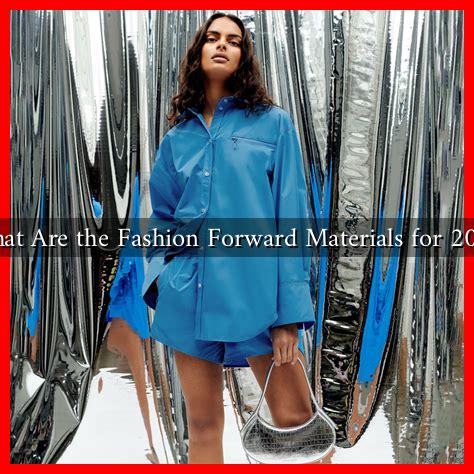-
Table of Contents
What Are the Fashion Forward Materials for 2023
As the fashion industry continues to evolve, the materials used in clothing and accessories are becoming increasingly innovative and sustainable. In 2023, designers and brands are focusing on materials that not only enhance aesthetics but also promote environmental responsibility. This article explores the most exciting fashion-forward materials of the year, highlighting their benefits, applications, and the brands leading the charge.
The Rise of Sustainable Fabrics
With growing awareness of environmental issues, sustainable fabrics are at the forefront of fashion innovation. These materials are designed to minimize environmental impact while maintaining quality and style. Some of the most notable sustainable fabrics making waves in 2023 include:
- Recycled Polyester: Made from post-consumer plastic bottles, recycled polyester reduces waste and energy consumption. Brands like Patagonia and Adidas are leading the way in using this material for their activewear lines.
- Organic Cotton: Grown without harmful pesticides and fertilizers, organic cotton is a healthier alternative for both the environment and consumers. Companies like Eileen Fisher are incorporating organic cotton into their collections.
- Tencel (Lyocell): Derived from sustainably sourced wood pulp, Tencel is biodegradable and produced in a closed-loop process that recycles water and solvents. Brands such as Reformation are utilizing Tencel for its softness and eco-friendliness.
Innovative Bio-Based Materials
Bio-based materials are gaining traction in the fashion industry as they offer a sustainable alternative to traditional textiles. These materials are derived from renewable biological resources, making them an attractive option for eco-conscious consumers. Key examples include:
- Pineapple Leather (Piñatex): Made from the fibers of pineapple leaves, Piñatex is a cruelty-free alternative to leather. Brands like Hugo Boss and Stella McCartney are incorporating this innovative material into their collections.
- Mushroom Leather (Mylo): Created from mycelium, the root structure of mushrooms, Mylo is a sustainable alternative to animal leather. Companies like Bolt Threads are pioneering its use in high-fashion items.
- Algae-Based Fabrics: Algae can be transformed into textiles that are biodegradable and have a lower environmental impact. Brands like Bloom are exploring algae-based materials for footwear and apparel.
Smart Textiles and Wearable Technology
As technology continues to advance, smart textiles are becoming an integral part of fashion. These materials can interact with the wearer or the environment, offering functionality beyond traditional fabrics. Notable examples include:
- Conductive Fabrics: These fabrics can transmit electrical signals, allowing for the integration of technology into clothing. Brands like Wearable X are creating garments that can track movement and provide feedback.
- Temperature-Regulating Fabrics: Materials that can adapt to body temperature are gaining popularity. Companies like Outlast Technologies are developing fabrics that keep the wearer comfortable in varying temperatures.
- Self-Cleaning Textiles: Innovations in nanotechnology have led to the creation of fabrics that repel dirt and stains. Brands like Nanoskin are exploring self-cleaning properties for everyday wear.
Case Studies: Brands Leading the Way
Several brands are at the forefront of using these innovative materials, setting trends for the rest of the industry. Here are a few notable examples:
- Stella McCartney: A pioneer in sustainable fashion, McCartney uses a variety of eco-friendly materials, including recycled polyester and Piñatex, in her collections.
- Patagonia: Known for its commitment to environmental responsibility, Patagonia incorporates recycled materials into its outdoor apparel, promoting a circular economy.
- Reformation: This brand focuses on sustainable practices and uses Tencel and other eco-friendly materials to create stylish, modern clothing.
Conclusion
As we move through 2023, the fashion industry is embracing a new era of materials that prioritize sustainability, innovation, and functionality. From recycled fabrics to bio-based alternatives and smart textiles, the options available to designers are expanding rapidly. Brands that adopt these materials not only contribute to a healthier planet but also appeal to a growing demographic of eco-conscious consumers. The future of fashion is not just about looking good; it’s about making responsible choices that benefit both people and the planet.
For more insights on sustainable fashion, visit Sustainable Fashion.

